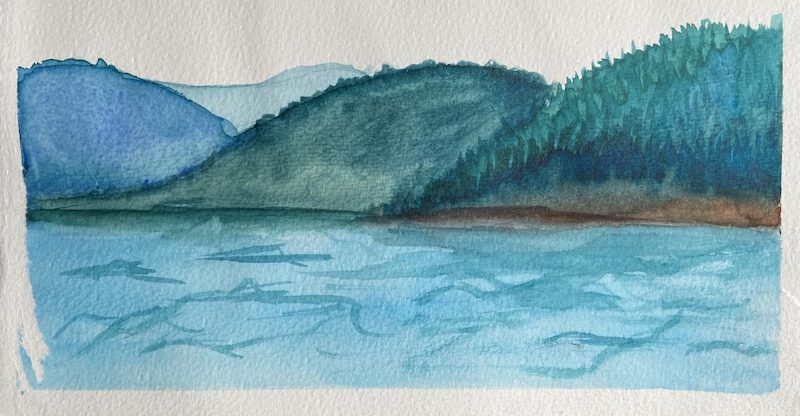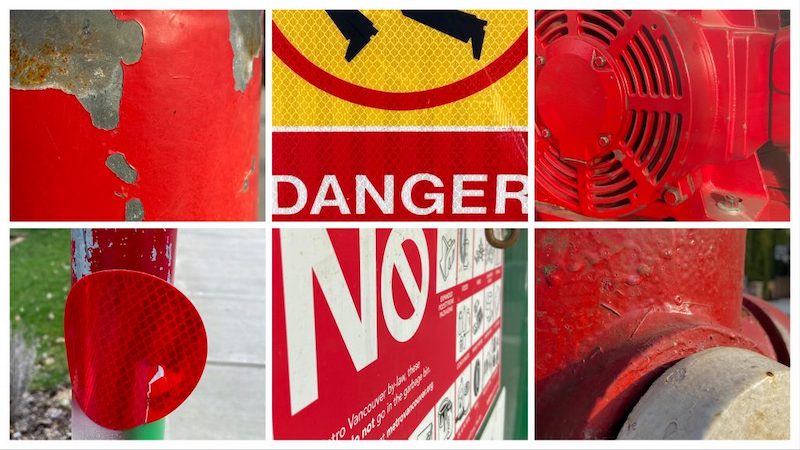
As a new member to the StoryToGo Team, you probably don’t know who I am! My name is Bjorn and I finished my undergrad at the University of Victoria last summer where I earned a Bachelor of Arts degree in psychology with a minor in art education. I am now a student at the Vancouver Art Therapy Institute where I am studying to become an art therapist. Through my posts, I aim to document my life as a student as well as introduce readers like you to the field of art therapy and its many benefits. Who knows, maybe you will decide that this is the field for you!
To listen to this article, click the red play arrow on the SoundCloud recording below:
What Brought Me to Art Therapy?
Art has always been an interest of mine but I didn’t take it seriously until I discovered the field of art therapy. I started off without a minor added to my program but I started to feel like something was missing. I yearned for a creative outlet but I wasn’t sure how to incorporate it into my studies. Sure, I could take a fun elective but if my program was feeling dull then, I felt as though I would find my future career to be dull as well. I searched and searched on what I could do with my psych degree and stumbled across art therapy. I immediately knew that it was perfect for me because I was able to combine my passions of psychology and creativity.
I added art education as a minor just before my final year at UVic so I could get a foundational background in art before applying for art therapy programs. Altering my degree so late in my studies made me nervous but I noticed a major improvement in how much I enjoyed my coursework. I also know many people that have changed their majors multiple times and are now thriving. Sometimes finding what is right for you takes time and that is perfectly okay.
What Is Art Therapy?
At VATI, I have learned that art therapy is a mental health profession that combines the process of creative art expression with models of counselling and psychotherapy to enhance emotional, physical, and mental health. It provides the client with an opportunity to explore personal problems and potentials, resolve conflicts, and facilitate self-awareness and understanding through the use of simple art materials.

Art therapy has been proven to be effective in areas such as:
- Addictions or substance use issues
- Developmental disorders and disabilities
- Coping with physical health conditions
- Depression, anxiety, and mental health
- Trauma or Post-Traumatic Stress Disorder (PTSD)
- Acquired Brain Injury (ABI)
- Aging and geriatric issues
Because art making occurs within the realm of the imagination, it opens the door to the story, and to remembering important events that may have been forgotten, or whose significance is unknown.
Tracy Councill
In my own practice, I aim to facilitate a non-verbal means for individuals and groups to connect with and express thoughts and emotions that are difficult to communicate. Sometimes words can be limiting in their definitions and expressing through art can expand those boundaries. While talking can be a part of the art therapy process, I view the act of expressing through art to be successful.
Art Prompt: Colour Walk
If you are looking for something creative to do this week, I recommend going for a colour walk around your neighbourhood. You can do this by yourself or with others if you choose. The goal of this activity is to connect you with your surroundings.
Materials Needed
- camera
Steps
- Pick a colour.
- Walk around your neighbourhood/community and search for your colour.
- Take pictures that showcase your colour of choice. How creative you get with this is up to you!
- Walk around for as long as you see fit.
Questions to ask yourself
- Is there a reason you chose your colour? If so, Why?
- How did you showcase your colour in each image? What led to your artistic decisions?
- What did you find interesting about the colour walk? What stood out the most?
- Did you make any discoveries?
- Were there any difficulties? Was your colour hidden or abundant?
- Has your connection to your surroundings changed as a result of this activity?
- If you did this as a group, you can discuss these questions with each other. The group aspect is interesting because even if you all take the same route, you will have different photographs to share.
*Disclaimer: Completing this activity is not equivalent to an art therapy session with a qualified professional*
I still have a year left at the Vancouver Art Therapy Institute and have a ways to go before I can become a registered art therapist. Currently, I am completing practicum hours at an elementary school where I am learning a lot and having fun. Each day I fall more in love with the profession and I am excited to take you all along on this journey.
You can get additional updates by checking out my Instagram.
References
Canadian Art Therapy Association. (2017). What is art therapy.
http://www.canadianarttherapy.org/what-is-art-therapy/
Councill, T. (2016). Art therapy with children. In D.E. Gussak and M.L. Rosal (Eds.), The Wiley handbook of art therapy (pp. 243-251). Malden, MA: John Wiley & Sons, Ltd.

Crys Stammler says
I loved reading this article and look forward to my colour walk!
Erica Hargreave says
Love that this inspired you to take a colour walk, Crys. It did the same for me.